Grocery shopping is a routine that everyone has to go through, but few know the secrets that can help make it more efficient, healthier, and even more budget-friendly. Whether you’re looking to save money, buy fresher ingredients, or discover healthier options, the grocery store is full of hidden gems. Some of these secrets can even help you lead a longer, more fulfilling life by making better choices when it comes to what you eat. In this guide, we’ll uncover 15 grocery store secrets that will change the way you shop and improve your well-being. These tips range from understanding food labels to selecting the best produce, and they’re all designed to help you live longer and make smarter choices.
1. Shop the Perimeter for Fresher, Healthier Foods

The layout of most grocery stores is no accident. Fresh produce, dairy, meat, and seafood are typically located along the perimeter of the store, while processed and packaged foods are often found in the middle aisles. This strategic placement is because fresh, whole foods are the foundation of a healthier diet, and shopping around the perimeter ensures you’re prioritizing those items. By focusing on the outer edges of the store, you’ll automatically be filling your cart with more nutrient-dense foods and avoiding temptation in the snack aisles. According to Chowhound, shopping the perimeter helps you stock up on nutrient-dense foods before being tempted by processed products.
However, this doesn’t mean the middle aisles are completely off-limits. Many dry goods, such as whole grains, legumes, and nuts, can be found in these aisles and are essential for a balanced diet. It’s important to strike a balance, but the general rule of thumb is that fresh is better. By starting with produce and proteins, you’re setting yourself up for healthier meals that will support your long-term health.
2. Read the Labels Carefully

While the front of food packaging may boast appealing images and catchy phrases, the most important information is often hidden on the back. The nutrition label is where you’ll find the truth about the product’s ingredients, calories, sugar, and serving size. Look out for hidden sugars in the ingredients list, as many foods marketed as “healthy” may still contain excessive amounts of sugar or sodium. As explained by the FDA, understanding nutrition labels empowers consumers to make healthier choices. Pay attention to serving sizes too—it’s easy to assume that a package labeled “low calorie” is a healthy choice, only to realize that the serving size is smaller than what you’d typically consume.
Also, be cautious of products labeled “natural” or “organic,” as these can sometimes be misleading. Organic foods are often more nutritious, but not all organic products are automatically healthy. It’s crucial to know exactly what’s in your food, and the label will give you all the details you need to make an informed choice. By taking the time to read labels, you’re able to choose products that align with your health goals.
3. Buy in Bulk to Save Money and Reduce Packaging
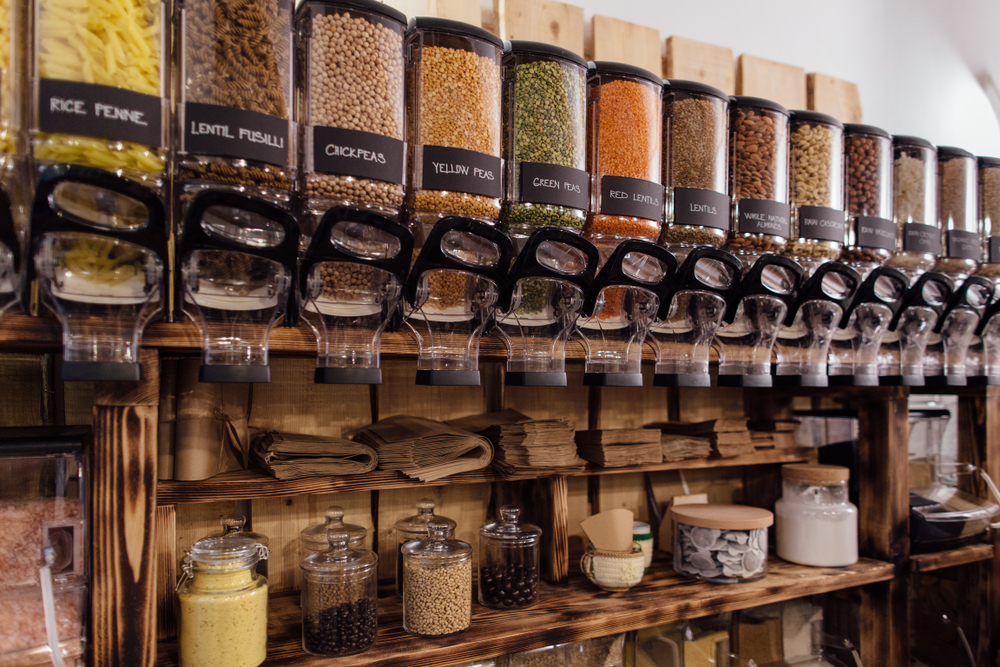
Buying in bulk is a simple way to save money on pantry staples like grains, pasta, and nuts. By purchasing larger quantities of items you use frequently, you’re able to take advantage of lower per-unit costs. Additionally, buying in bulk reduces packaging waste, making it an environmentally friendly choice. According to Treehugger, bulk shopping can significantly reduce waste. Many grocery stores have bulk bins where you can scoop out as much or as little as you need, which not only saves you money but also helps reduce your environmental footprint.
However, when buying in bulk, be mindful of the shelf life of the products you’re purchasing. Make sure you can use the items before they spoil, especially if they’re perishable. Also, store bulk items properly to ensure they remain fresh, such as keeping grains and nuts in airtight containers. Buying in bulk isn’t just a smart financial choice; it’s a win for both your wallet and the planet.
4. Shop Seasonally for Fresher and Cheaper Produce

Shopping for seasonal produce is one of the best ways to ensure you’re eating fresh, flavorful, and nutrient-packed foods. When fruits and vegetables are in season, they are more abundant, and grocery stores can offer them at lower prices. For example, strawberries are typically cheaper and sweeter in spring, while pumpkins are abundant in the fall. As noted on Adventist Health, eating seasonally enhances flavor while supporting local farmers and reducing environmental impact. Not only does this allow you to enjoy the freshest flavors, but it also supports local farmers and reduces the environmental impact of transporting out-of-season produce.
In addition to being cheaper, seasonal produce is often at its peak in terms of nutritional value. Fruits and vegetables that are harvested in their natural growing season are packed with more vitamins, minerals, and antioxidants essential for overall health. By adapting your shopping list to what’s in season, you’re ensuring your meals are always varied and nutrient-rich.
5. Don’t Shop Hungry to Avoid Impulse Purchases

One of the most common shopping mistakes is going to the store while hungry. When your stomach is empty, your brain signals for high-calorie, satisfying foods to curb your hunger quickly, which leads to impulse buys that may not align with your health goals. These foods are often processed, sugary, or high in fat, and can derail your grocery budget and dietary intentions. Avoid this by eating a healthy snack or meal before heading out to the store, so you’re able to make thoughtful, informed decisions when shopping.
When you shop hungry, you’re more likely to fill your cart with comfort foods or snacks that you don’t need, which can harm your long-term health. Having a full stomach allows you to stick to your shopping list and resist the temptation of unhealthy foods that might be placed strategically along the aisles. Preparing before you shop and shopping with a clear mind is a simple way to make better decisions for both your health and your wallet.
6. Buy Frozen Fruits and Vegetables for Longer Shelf Life
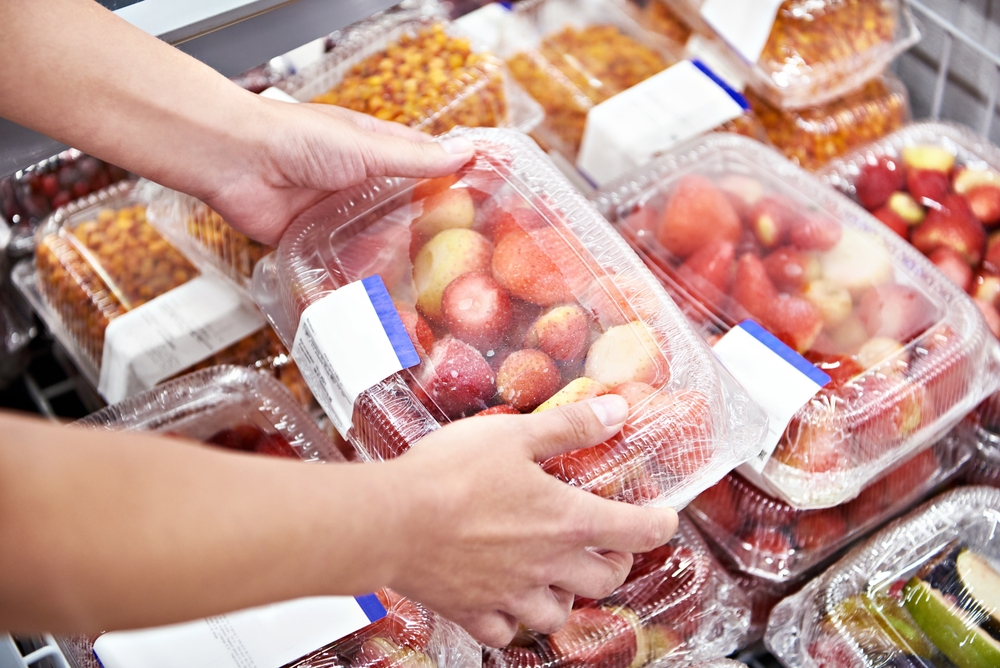
Frozen fruits and vegetables are often just as nutritious, if not more so, than their fresh counterparts. They are typically picked at the peak of ripeness and then frozen immediately, locking in essential nutrients and flavors. These frozen options are also much more convenient, as they require less preparation time and have a longer shelf life. You can stock up on frozen spinach, berries, peas, and other staples, knowing that they will be ready when you need them and won’t spoil as quickly as fresh produce.
Another benefit of frozen produce is that it reduces food waste. Since frozen fruits and vegetables can last months in the freezer, you don’t have to worry about them wilting or spoiling. They’re perfect for busy schedules, meal prepping, and keeping a variety of nutrients available all year round. By incorporating frozen produce into your diet, you can still enjoy a wide array of healthy foods without the pressure to use them before they spoil.
7. Avoid Pre-Cut Produce for Better Quality and Value
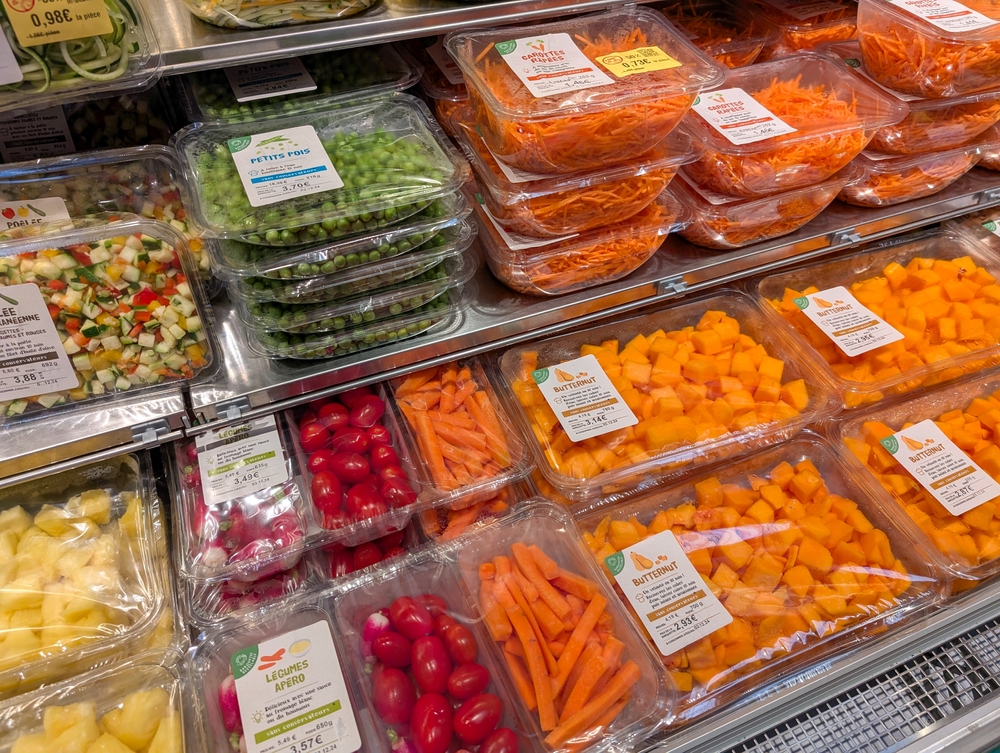
While pre-cut fruits and vegetables may seem like a convenient option, they are often more expensive and can lose some of their nutritional value due to exposure to air. Pre-cut produce is typically coated with preservatives or exposed to light, which can cause it to lose vitamins and antioxidants more quickly than whole produce. You’re also paying for the convenience of someone else doing the work for you, which drives up the price. By purchasing whole produce and cutting it yourself, you not only save money but also ensure that the fruits and vegetables stay fresher longer.
In addition, pre-cut produce can sometimes be less fresh than whole options, as it’s more likely to be sitting in the store for longer periods. Cutting your produce gives you the flexibility to choose the freshest items and store them properly. It might take a few extra minutes to slice your veggies, but the benefits—both in terms of nutrition and cost—are well worth it. Plus, you get to enjoy the satisfaction of doing it yourself and ensuring the highest quality food for your meals.
8. Use Coupons, But Be Strategic

Coupons can be a great way to save money, but it’s important to use them strategically. Rather than simply using any coupon you find, make sure the products align with your shopping list and health goals. Coupons for processed snacks or sugary drinks might tempt you to buy things you don’t need, which could derail your healthy eating efforts. Instead, use coupons for items you would already be purchasing, such as pantry staples or fresh produce.
By combining coupons with store sales or promotions, you can maximize your savings without compromising on quality. Many grocery stores also offer digital coupons, making it even easier to track discounts on your favorite products. While it’s tempting to grab a coupon for a product that’s on sale, the best way to save money is to stay focused on what you truly need. This helps you cut costs without bringing home unnecessary items that don’t align with your health goals.
9. Avoid Single-Serve Packages for Better Value

Single-serve packages are often marketed as convenient, but they can be much more expensive than buying in bulk or larger quantities. While they’re perfect for busy individuals who don’t want to deal with leftovers, they usually cost significantly more per ounce or serving. Buying in bulk allows you to control portion sizes, reduce packaging waste, and save money in the long run. Additionally, larger packages often provide more food for the same price, making them a better deal for families or meal planners.
Single-serve snacks and pre-packaged meals are also less environmentally friendly due to the excessive packaging. By opting for bulk or larger versions, you can reduce your environmental impact and make more sustainable choices. Plus, buying in larger quantities lets you control your portions, making it easier to stick to healthier serving sizes and avoid overeating. The initial investment in larger packages may be higher, but the savings over time can be significant.
10. Shop for Store Brands to Save Money Without Sacrificing Quality
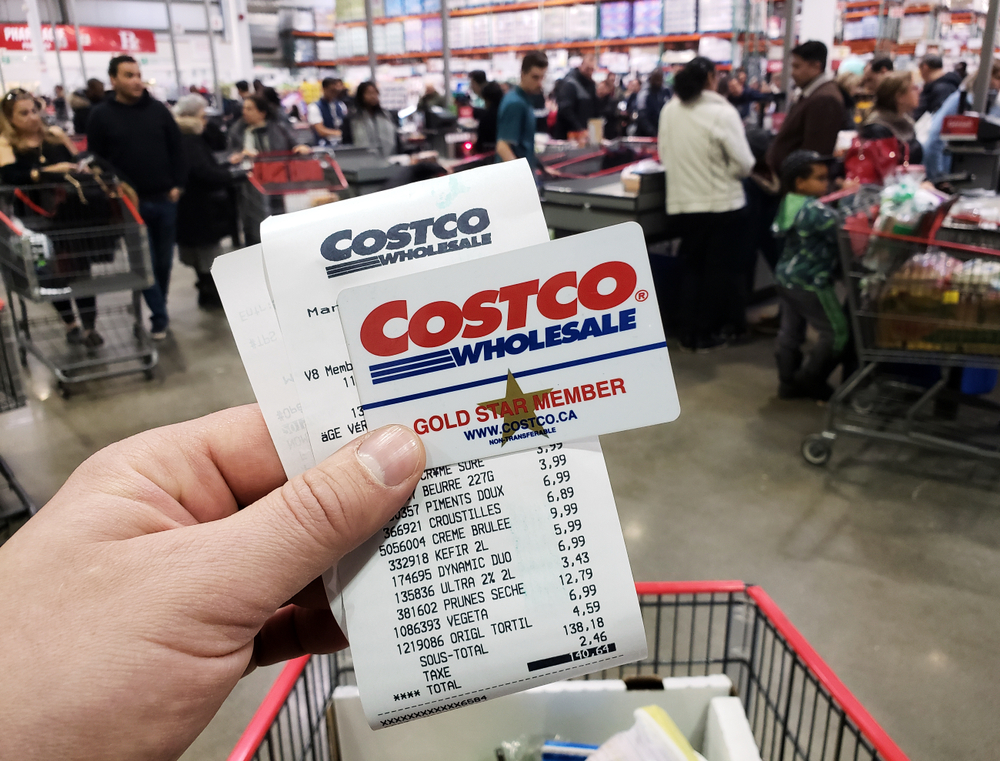
Many grocery stores offer their store-brand products, which can be just as good as, if not better than, name-brand items. Store-brand products often come from the same manufacturers as their branded counterparts, meaning you’re getting the same quality for a fraction of the price. Whether it’s canned goods, pasta, or cleaning supplies, store brands offer a more affordable option without compromising quality.
Switching to store brands allows you to save money on the same or similar products, freeing up your budget for healthier or more premium items. Store brands also frequently offer organic or gluten-free versions of popular products, allowing you to make healthier choices while saving money. Just be sure to check labels to ensure you’re getting the best deal, but generally, store-brand items are a great option for anyone looking to cut costs without sacrificing quality.
11. Don’t Be Afraid to Ask for Discounts

Many people don’t realize that they can ask grocery stores for discounts on certain items, especially on things like day-old bakery goods or products that are close to their expiration date. Stores are often willing to mark down items that are nearing their sell-by dates to avoid waste, and if you don’t mind buying them a bit earlier, you can often score a great deal. It doesn’t hurt to ask if there are any available discounts on perishable items or even bulk products. Asking for a discount, especially if you’re buying a larger quantity or shopping regularly, might even help you build a relationship with your local store and make future deals easier to come by.
In addition to discounts on items close to expiration, some grocery stores have loyalty programs that offer exclusive discounts or points. These programs can be incredibly helpful for anyone who shops at the same store regularly. By signing up for these rewards, you can make sure you’re getting the most out of your shopping trips, as they often provide discounts on fresh produce, meats, and pantry items that you buy frequently. It’s an easy way to save on things you’re already planning to buy.
12. Choose Whole Grains Over Refined Carbs
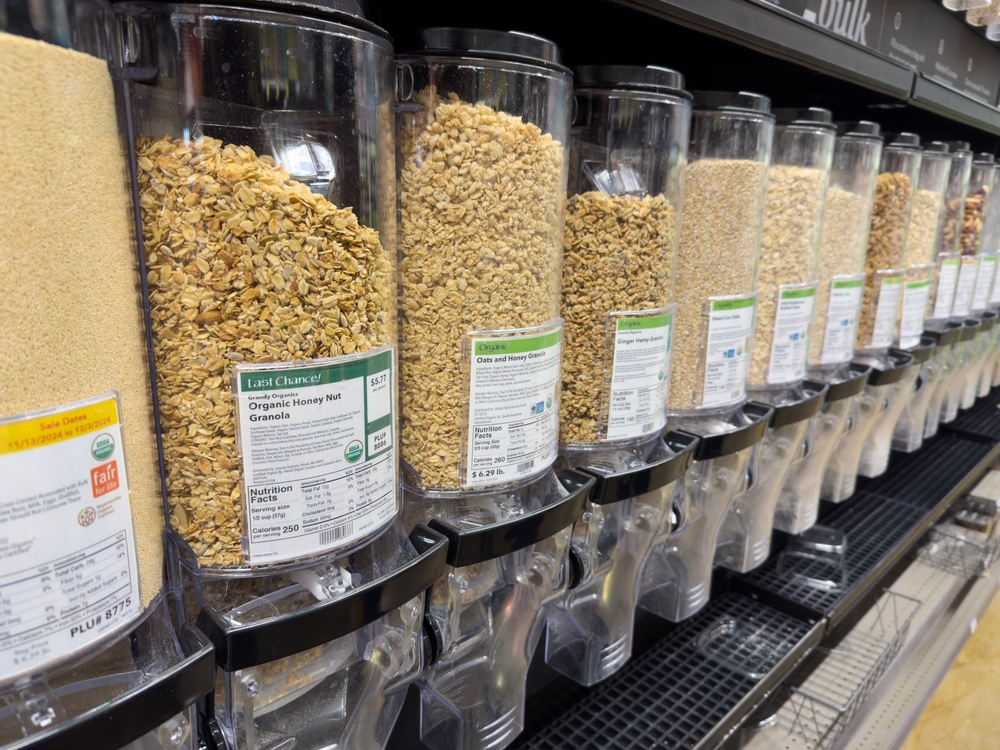
When it comes to building a healthy diet, choosing whole grains over refined carbohydrates is a crucial step. Whole grains, such as quinoa, brown rice, and oats, retain their natural fiber and nutrients, which help with digestion, improve heart health, and keep you fuller longer. Refined carbs, like white bread and pasta, have been stripped of many nutrients and can cause blood sugar spikes, leading to energy crashes and increased hunger later on. By making the switch to whole grains, you’ll not only feel better but also make a long-term impact on your overall health.
When shopping for grains, make sure to look for labels that say “100% whole grain” or “whole wheat,” as many products can still be marketed as healthy even if they contain a significant amount of refined flour. Even though whole grains might cost a bit more than refined options, they provide a greater nutritional value, making them a worthwhile investment in your long-term health. By choosing whole grains consistently, you’re ensuring that your body receives the fiber, vitamins, and minerals it needs to thrive.
13. Stock Up on Freezer-Friendly Foods for Convenience

Freezing is a fantastic way to extend the shelf life of a wide range of foods, making it easier to enjoy healthy meals even on your busiest days. Stocking up on frozen fruits, vegetables, and meats can provide you with the convenience of having nutritious options on hand when you don’t feel like cooking or running to the store. Frozen foods retain most of their nutritional value and are often more affordable than fresh produce, especially when bought in bulk. Consider freezing things like homemade soups, stews, and smoothie packs, which can be reheated or blended quickly for a healthy meal.
In addition to saving money, having a well-stocked freezer can also help reduce food waste. By buying items that can be frozen and using them within their optimal timeframe, you ensure that nothing goes to waste. Not only does this save you money in the long run, but it also cuts down on your carbon footprint. Freezer-friendly meals are an essential part of any busy lifestyle, as they allow you to eat well even when you’re short on time or energy.
14. Don’t Be Afraid to Experiment with New Foods

One of the joys of grocery shopping is the opportunity to try new ingredients, recipes, and flavors. While it can be easy to stick to the same old products week after week, adding variety to your meals can open up new health benefits and help you maintain a balanced, exciting diet. Many grocery stores now offer a variety of international and specialty foods that can introduce new cooking methods, flavors, and health benefits. For example, trying out plant-based alternatives, ancient grains, or exotic fruits can expand your culinary horizons and boost your nutrition.
Experimenting with new foods also helps prevent meal fatigue, making it easier to stick to a healthy eating plan. It’s easy to get stuck in a routine where you eat the same meals repeatedly, but trying different foods keeps things fresh and interesting. If you’re not sure where to start, look for items that are in season or on sale, and challenge yourself to incorporate them into your meals. By being open to new flavors and ingredients, you can enrich your diet and potentially discover new foods that you love.
15. Use a Shopping List and Stick to It
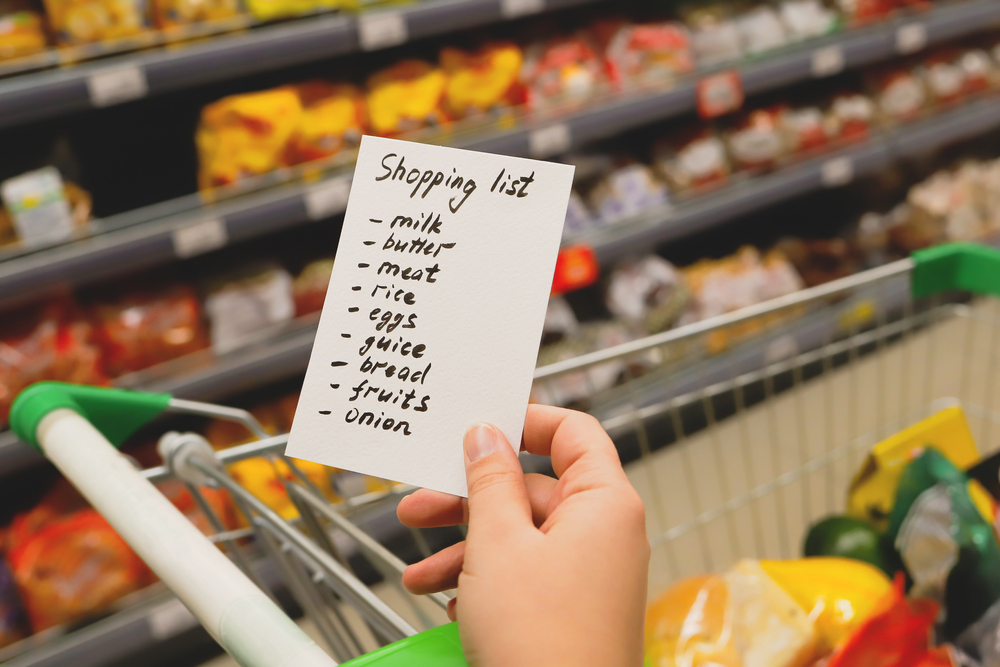
One of the best ways to ensure you’re buying healthy, necessary items and avoiding impulse purchases is by using a shopping list. Before you head to the store, take a few minutes to plan your meals for the week and write down the items you need. This simple habit helps you stay focused on your shopping goals, cuts down on the time spent wandering the aisles, and reduces the chances of picking up unnecessary items. If you find yourself frequently veering off your list, try sticking to a set budget or using a grocery app to help guide your purchases.
A shopping list also helps you avoid overbuying, which can lead to wasted food and money. By planning ahead, you’ll know exactly what you need and can avoid the temptation of “just browsing” for items that aren’t necessary. Sticking to your list ensures that your grocery store trips are more efficient and effective, helping you stay on track with your health and budget goals. This simple yet powerful strategy makes shopping less stressful and more organized.
Natasha is a seasoned lifestyle journalist and editor based in New York City. Originally from Sydney, during a stellar two-decade career, she has reported on the latest lifestyle news and trends for major media brands including Elle and Grazia.


